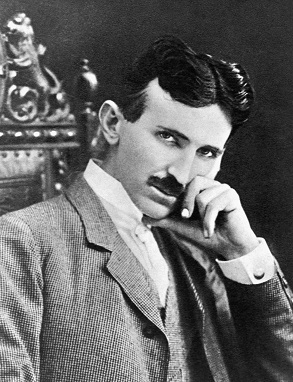Hallo Chris, it sounds obvious that we need power, the product of volts x amps, to be generated... less obvious is the process to harvest these two quantities from the environment with the less effort possible.
Luckily we are submerged in an ocean of energy, so it is only a matter of transformation process.
Gerard Morin continuously underlines that the resonance is the key.
UFOPolitics says that it is only a matter of magnetic geometry, an imposed "unbalance". Broken symmetry.
Others state that the power is in the charges separation: the key is in the dielectric (Testatika, Whimshurst).
You discovered the partnered coils and your assumption that the currents have to be shifted 180 degrees out of phase is very similar - in the behavior - to those bucking coils.
Some think that we can tap the CMBR (Common Microwave Background Radiation) as it is the infinite source of the universe (from a MACROscopic point of view).
Tom Bearden and many others see in the ZPE (Zero Point Energy) and in the transversal/longitudinal waves the best way to produce electrical energy at no cost (the microscopic point of view).
Ok, from my point of view, all of them are right: the Tesla's claim "we live in an ocean of energy" is correct and we can extract/transform the electrical energy through all the above mentioned methods. And from many more.
In the last 6 years of my life I have studied documents, watched videos for a long time, night and day, and I have collected more than 118Gb of material, which is at your complete disposition (I will put soon this material on my website free-energy-school.com, not yet ready, be patient).
Thanks to this huge amount of documents, I realized that the law of conservation of energy is true. In a closed system. We don't live in a closed system, we live in the universe, which is not so closed. So, that law can be applied only in a restricted set of mathematical models which are very, very distant from the reality.
The universe, for some, is in a constant balance - even if in constant expansion - and every single variation in this equilibrium calls a considerable amount of energies of every kind, to re-establish this equilibrium.
It could be only a speculation of mine but I think that a prime mover is the only thing we need: it can be as little as a 1.5V battery or less, which has to be amplified EXPONENTIALLY in the VOLTS dimension/entity (the method preferred by Mr.Nikola Tesla) because it is the simplest, easiest and cheaper method to excite the electrons.
Once in motion, we can accelerate, trap, confine, separate and redirect them through the magnetism, through the ferro-resonance, we can temporary compress them in a cage - like in a capacitor - and release them in a moltitude of ways to obtain current or more voltage, as needed.
We have to call electrons to us, discipline them, and put them at work.
Gerard Morin, in one of its videos, demonstrated how it is important to go higher and higher with volts, until we obtain a spark (Tariel Kapanadze did the same with its Kapagen): that spark is an electron collector, not a simple discharge through the air.
We can see at that spark as a starting point: that is our source because in that spark live the replenishing energies of the universe - those energies which keep the universe in balance - and we can obtain a spark with just a small prime mover, made of few volts and few amps.
A full-wave Cockroft-Walton, in conjunction with a Marx Generator, allows us to step up DC by many folds and obtain a spark (a wide set of sparks if you look at the construction technique of a Marx Generator), a Tesla coil is an awesome, amazing example to have many sparks and lot of other radiant energy (Don Smith loved that way to be used for producing usable electricity with its generator).
A spark is an AC source and can be tuned at the frequency we want, with almost no restrictions in amplitude.
The ferro-resonance way do a similar thing but takes advance of the magnetic process involved in the magnetization/demagnetization process of the underlined core's material, essentially is a different way to collect electrons, a sort of "vacuum cleaner pump" which attracts them at every induction cycle.
A spark which interact with some noble gas, or in a complete vacuum, produces plasma.
A spark which interacts with a significant magnetic field produces a plasma forcefield (look at the Boeing researches on this field as a new kind of anti-weapon shields), and is - also - the base for the MHD (Magneto-Hydro-Dynamic) propulsion.
I'm telling a banal story, I'm saying obvious things but if we fix in our minds this electron flow - regardless the method we are using in our experimentation -, its interaction with the magnetism and the dielectricity, and try to visualize it with our imagination/knowledge, we can improve a lot our skill and reach our goal faster.
Sorry Chris, sorry guys if I wasted your precious time: my promise is to show you, as soon as I can, some real-world experiments based on the above - apparently useless - words.
Thank you Chris for the above two videos: if you remember, I've put my public comment about them on YouTube, immediately after their publishing. After my comment, you invited me to join this awesome, lovely forum. ;o)
Devesh















